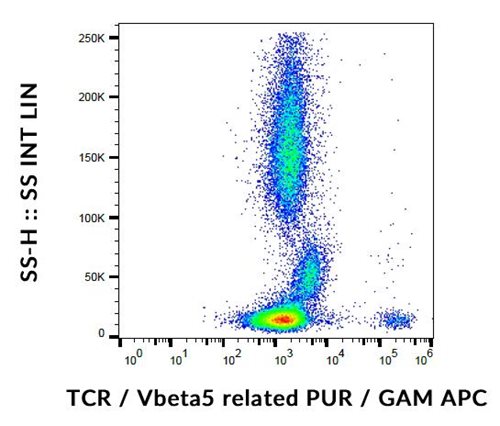Recombinant Human Casein kinase I gamma-2/CSNK1G2 (N-6His)
Shipping Info:
For estimated delivery dates, please contact us at [email protected]
| Amount : | 50 µg |
| Content : | Supplied as a 0.2 µm filtered solution of 20mM Tris,500mM NaCl,10%Glycerol,1mM DTT, pH 8.0. |
| Storage condition : | Store at -20°C, stable for 6 months after receipt. Please minimize freeze-thaw cycles. |
| AA sequence : | MGSSHHHHHHSSGLVPRGSHMSKAGGGRSSHGIRSSGTSSGVLMVGPNFRVGKKIGCGNFGELRLGKNLYTNEYVAIKLEPIKSRAPQLHLEYRFYKQLSATEGVPQVYYFGPCGKYNAMVLELLGPSLEDLFDLCDRTFTLKTVLMIAIQLITRMEYVHTKSLIYRDVKPENFLVGRPGTKRQHAIHIIDFGLAKEYIDPETKKHIPYREHKSLTGTARYMSINTHLGKEQSRRDDLEALGHMFMYFLRGSLPWQGLKADTLKERYQKIGDTKRATPIEVLCENFPEEMATYLRYVRRLDFFEKPDYDYLRKLFTDLFDRSGFVFDYEYDWAGKPLPTPIGTVHTDLPSQPQLRDKTQPHSKNQALNSTNGELNADDPTAGHSNAPITAPAEVEVADETKCCCFFKRRKRKSLQRHK |
Source: E. coli.
MW :47.6kD.
Recombinant Human CSNK1G2 is produced by our E.coli expression system and the target gene encoding Met18-Lys415 is expressed with a 6His tag at the N-terminus. CSNK1G2 is a cytoplasmic protein which contains one protein kinase domain. It is amember of the CK1 Ser/Thr protein kinase family of the large casein kinase I (CKI) subfamily. CSNK1G2 participates in Wnt signaling, involves in brain development and vesicular trafficking and neurotransmitter releasing from small synaptic vesicles. It regulates fast synaptic transmission mediated by glutamate. SMAD3 phosphorylation promotes its ligand-dependent ubiquitination and subsequent proteasome degradation, thus inhibiting SMAD3-mediated TGF-beta responses.
MW :47.6kD.
Recombinant Human CSNK1G2 is produced by our E.coli expression system and the target gene encoding Met18-Lys415 is expressed with a 6His tag at the N-terminus. CSNK1G2 is a cytoplasmic protein which contains one protein kinase domain. It is amember of the CK1 Ser/Thr protein kinase family of the large casein kinase I (CKI) subfamily. CSNK1G2 participates in Wnt signaling, involves in brain development and vesicular trafficking and neurotransmitter releasing from small synaptic vesicles. It regulates fast synaptic transmission mediated by glutamate. SMAD3 phosphorylation promotes its ligand-dependent ubiquitination and subsequent proteasome degradation, thus inhibiting SMAD3-mediated TGF-beta responses.
Endotoxin : Less than 0.1 ng/µg (1 IEU/µg) as determined by LAL test.
For Research Use Only. Not for use in diagnostic/therapeutics procedures.
| Subcellular location: | Cytoplasm |
| Post transnational modification: | Autophosphorylated. |
| Tissue Specificity: | Testis. |
| BioGrid: | 107839. 35 interactions. |
|
There are currently no product reviews
|















.png)








